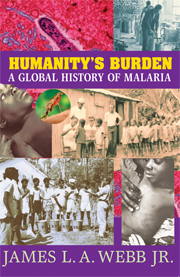5 - Toward Global Public Health
Published online by Cambridge University Press: 05 March 2015
Summary
For most of the nineteenth century, European and Euro-American physicians were in general agreement that quinine worked wonders against intermittent and remittent fevers. Quinine was thought to be able to prevent the eruption of fevers and, if administered after the onset of fevers, to “cure.” The categories of intermittent and remittent fevers were vague, and in practice, specialists had difficulty distinguishing between different diseases, particularly yellow fever and malaria. Thus, there was considerable confusion about the therapeutic range of quinine and the other cinchona alkaloids. At times, physicians employed quinine to treat typhoid, typhus, erysipelas, scarlatina, pneumonia, cynanche trachealis, delerium tremens, acute rheumatism, chronic rheumatism, cholera infantum, cerebro-spinal meningitis, and surgical shock, in addition to yellow fever and malaria. Even as late as 1882, Otis F. Manson, the author of a lengthy volume on the physiological and therapeutic action of quinine, noted, “Although nearly two-thirds of a century has elapsed since the introduction of quinine into the materia medica, yet perhaps there is no agent in its vast catalogue concerning whose properties such opposite opinions are held, or which has elicited more discussion.”
Even in the treatment of intermittent and remittent fevers, physicians disagreed over the size and the timing of the appropriate dosage and as to whether or not the alkaloids should be combined with more standard treatments, such as bleeding and purging. Most physicians considered these actions necessary to adjust the humoral balances within the patient's body.
- Type
- Chapter
- Information
- Humanity's BurdenA Global History of Malaria, pp. 127 - 159Publisher: Cambridge University PressPrint publication year: 2008



